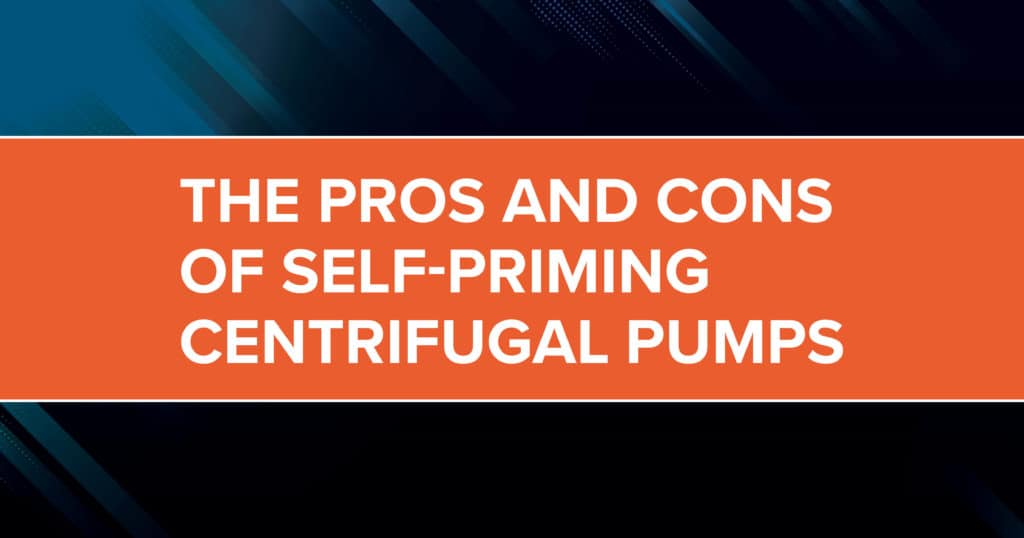When operating a centrifugal pump, it’s best to prime it before running it. Centrifugal pumps can be run without priming, but that will likely lead to problems. Breakdowns and equipment damage can occur, resulting in costly downtime and repairs. A properly primed pump will work more dependably no matter the application.
However, priming pumps can be a difficult task, which is why self-priming centrifugal pumps continue to grow in popularity. Self-priming pumps can be operated when not entirely filled, and can automatically overcome any problems when air mixes with the fluid, saving considerable time compared to manually priming the pump. As with any piece of powerful equipment, though, there are pros and cons to self-priming pumps. In this article, we will look at both the ups and downs of self-priming pumps so you can make a more informed purchase decision.
Advantages of a Self-Priming Pump
There are several benefits to a self-priming centrifugal pump. First is getting the pump running and up to full speed. Rather than manually priming the pump and ensuring it is completely filled with water, the pump can be run with some air and water mixed together. This gets the pump up to speed quicker, though it is important to note there must be some water in the pump; it should never be started completely dry.
The wide variety of materials a self-priming pump can handle is also a distinct advantage. Self-priming pumps do well with corrosive fluids, slurries and even solids—usually up to three inches.
Another pro of the self-priming pump is the ability to pump fluid while the pump is not submerged. This allows greater flexibility than a submersible pump that has to stay underwater to stay primed and function correctly.
Disadvantages of a Self-Priming Pump
Perhaps the biggest downside of self-priming pumps is that they are generally less efficient than operating a standard pump. Clearances usually need to be larger—especially when dealing with solids—and a larger volute is required to allow for the self-priming process. This often leads to lower pump pressure and potential issues with the suction side of the pump.
While the name “self-priming” implies priming the pump is not needed, there will be instances when manual priming is necessary. Manual priming will need to be performed before the pump is used for the first time, and then reprimed later to ensure optimized operation.
Another factor that leads to less efficient operation is the fact that the pump is located further away from the liquid source compared to a submersible pump. Pipe lengths must be kept to a minimum to help prevent air leakage and loss of suction pressure.
Making the Right Pump Decisions
The truth is, self-priming pumps are perfect for some operations and less than ideal for others; it just depends on the application, system setup, and other factors. That’s why it helps to have a knowledgeable engineering team on your side to guide you in making the right decisions. The team at Cortech DXP will explore your pump options and make sure you get the right configuration, installation, and maintenance plan to get the absolute most out of your pump— self-priming or not. Contact us today to learn more about the pros and cons of self-priming centrifugal pumps.
- Burlingame Engineers
- Cortech Engineering
- Turbo Machinery
- Turbo Machinery
- Burlingame Engineers
- Cortech Engineering

